BIR-AS-SABA’, NAQAB (Analysis) — The Naqab region is assumed to be an integral part of the apartheid state of Israel. However, like all other parts of historic Palestine, it was taken by force and occupied since 1948, when the Zionist state was established.
For the last seven decades its indigenous people, the Palestinian Bedouin who have historically lived here for thousands of years, have been living without rights and subjected to a vicious campaign of dispossession and racial segregation.
Naming rights
When looking at information about the Naqab desert the first thing one notices is that most of the sources refer to it by the Israeli-given Hebrew name, the “Negev.” Similarly, the West Bank is now Judea and Samaria; Marj Ibn Amer is Emek Izra’el; and countless other Palestinian localities that have been taken are renamed. This is part of the Zionist policy of imposing Jewish identity on the Palestinian landscape.
A map will show that the Naqab makes up almost half of Palestine’s entire land mass. It is shaped like a triangle with its apex in the south towards the Bay of Aqaba, in what used to be called Um Al-Rashrash and is now the Israeli town of Eilat. The Naqab borders the Sinai Peninsula on the west and the Jordan River Valley on the east. On its northern boundary lays the Wilderness of Jerusalem, or Barriyat Al-Quds.
The Naqab and its Bedouin history
Though called a desert, the Naqab is actually fairly fertile and allows for non-irrigated agriculture and animal husbandry. In the area of Bir-as-Saba’, the largest city in the Naqab, rainfall measures between 8 to 12 inches per year. The central plateau receives 3 to 4 inches of rain per year — flash flooding is quite common in the winter and is largely the cause for the heavily dissected wadis, or watercourses.
The Palestinian Bedouin are the indigenous people of the Naqab and have been known to reside there since time immemorial. For generations, the Bedouin, who existed as semi-nomadic tribes, have earned their livelihood through agriculture, raising livestock, and trading goods across the levant. It was not until fairly recently that Zionist settlements — in the form of cities, towns and farming communities exclusively for Jewish settlers — were created in the Naqab by the State of Israel.
Over 100,000 Palestinian Bedouin lived in the Naqab prior to the establishment of Israel in 1948. As a result of the ethnic cleansing campaign and the establishment of the Zionist state, the majority of the Bedouin were forced to flee to neighboring states and only about 11,000 remained.
The Naqab Bedouin today

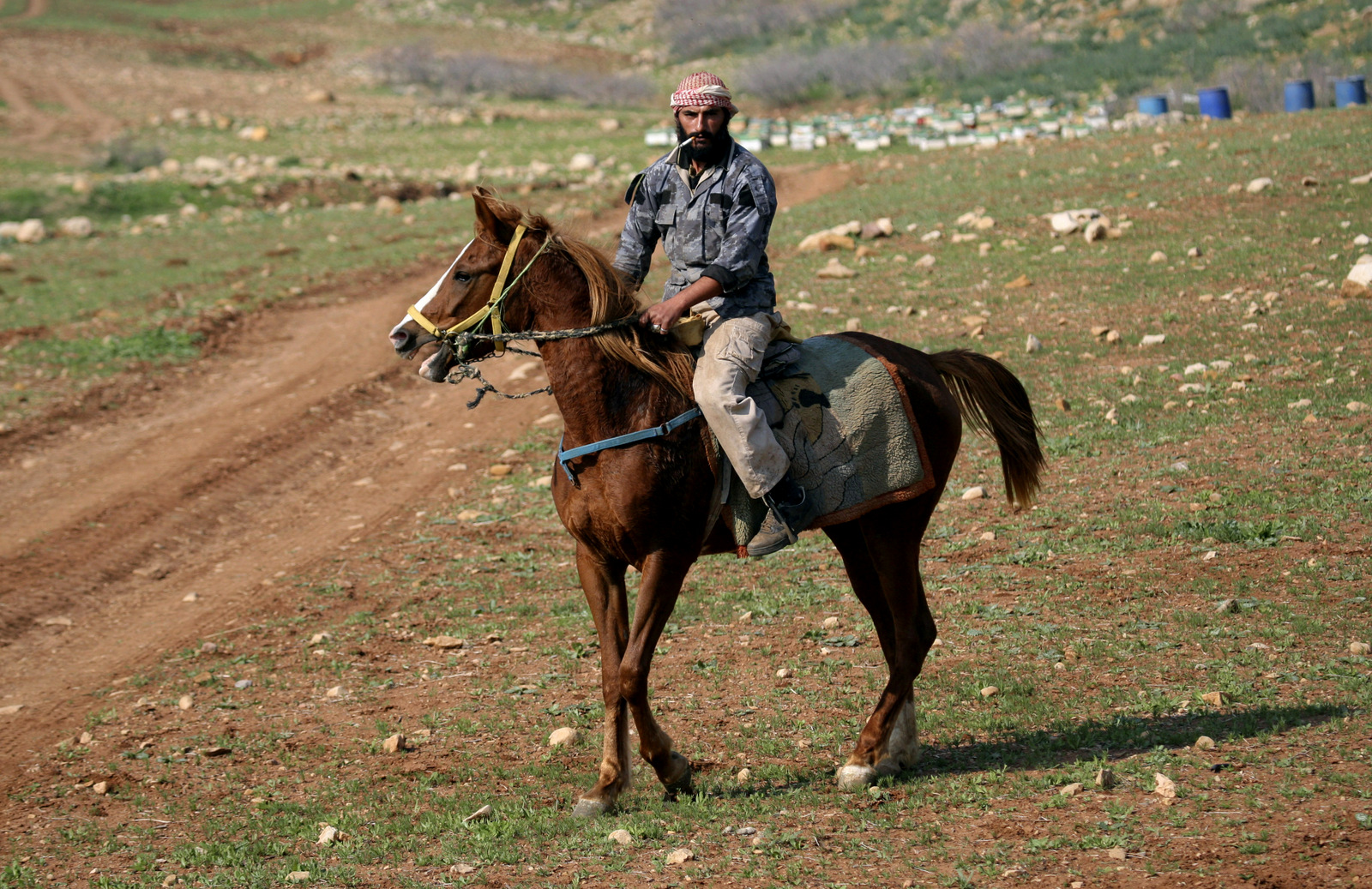
A Palestinian Bedouin rides a horse near the town of Tubas in the Jordan Valley, Jan. 3, 2013. (AP/Mohammed Ballas)
According to a report prepared by Negev Coexistence Forum For Civil Equality and submitted to the UN Permanent Forum on Indigenous Issues, the 11,000 Bedouin that remained in the Naqab were moved in the 1950s and 1960s from their ancestral lands into a restricted zone called the siyag (closure), in the northeastern Naqab, which makes up only 10 percent of the Bedouin’s land prior to 1948 and is known to be less fertile.
Also according to this report, the Bedouin today have “the highest rate of infant mortality in Israel, a high incidence of respiratory diseases, and a large percentage of Bedouin children are hospitalized each year (Almi 2003).” There are not enough medical clinics to serve this population (fewer than 10 clinics serving 76,000 people). The report adds that “it is important to note that this health disaster is occurring in a modern, fully developed country.”
Clearly, though, like other 1948 Palestinians, the Bedouin are now citizens of Israel, where they enjoy few citizenship rights. Their ancestral agricultural lands particularly in the western part of the Naqab were “Judeaized” and transferred to new Jewish settlements.
Read more by Miko Peled
- Netanyahu Corruption Case: Bibi Skates on Genocide, Trips on Graft
- The Trial and Conviction of the Holy Land Foundation Five
- Four Days in Palestine: My Time with Bassem Tamimi
- Fauda: An Israeli Netflix Series that Makes Oppression Sexy
According to Adalah, the legal center for Arab minority rights in Israel, the indigenous Palestinian Bedouin communities within the Naqab are ranked at “1” in the socioeconomic scale in Israel, 1 representing the lowest on a scale from 1 to 10. More than 65 percent of the Bedouin families live in poverty, compared to about 20 percent of all Israeli-Jewish families. Furthermore, 63 percent of the Bedouin population in the Naqab is under the age of 20. Infant mortality rate in 2008 was 15.0 per 1,000 live births while it was only 2.9 per 1,000 live births among the Jewish population.
Schools are severely overcrowded and poorly equipped, and the drop-out rate for Bedouin children is around 70 percent. In addition to that, the Bedouin community is under constant threat of home demolitions, with 1,000 homes demolished in the Naqab in the year 2011 alone.
Out of a total population of 200,000, some 95,000 Bedouin live in 35 communities that are referred to as the “unrecognized” towns and villages. These are communities that predate the establishment of the Zionist state. Because the communities refuse to relocate into areas determined by the State, they are denied basic services and infrastructure. This means that they are denied paved roads; they have no pharmacies, no medical specialists, and ambulances do not enter them; no water supply, waste collection, electricity, and schools — and again, this occurring in a “modern, fully developed country.”
An elections Catch-22

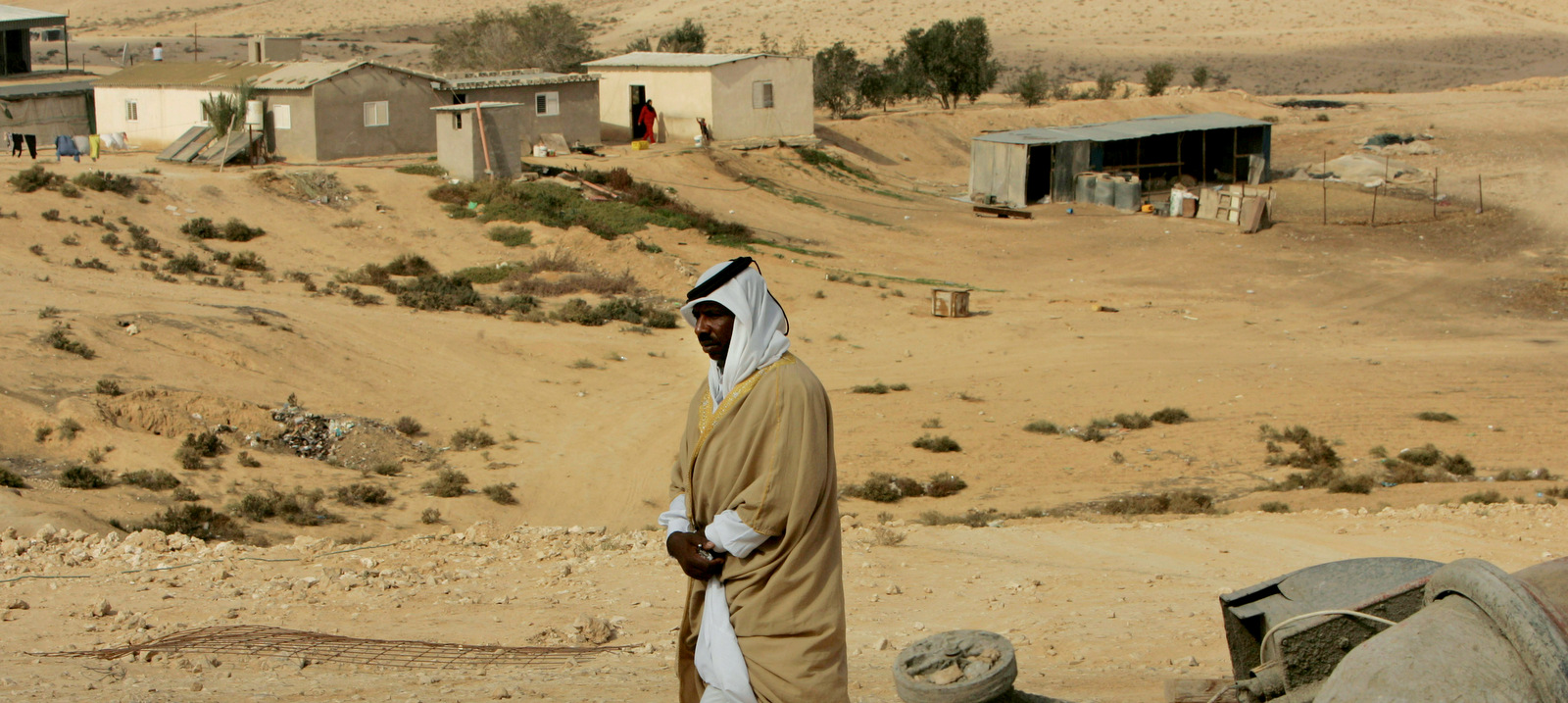
A Bedouin sheikh walks in the unrecognized village of Wadi El Naam, southern Israel, Nov. 20, 2008. Israeli authorities were reportedly planning to destroy a mosque in the village because it was built without a permit, which Bedouins cannot obtain in their unrecognized communities. (AP/Tara Todras-Whitehill)
In addition, there is no local authority for the unrecognized communities, which means that they cannot participate in local elections. On a recent visit to the Naqab, I spoke with Attia El-Assam, who is the chair of the regional council of the unrecognized villages in the Naqab.
He described to me how the state of Israel deals with the regional council:
The state did not recognize the traditional Bedouin leadership, claiming it did not represent the community, and so, they decide to hold elections and create a democratically elected council. When they came back to the State to discuss their issues, the government claimed that they could not be trusted because their elections may have been tainted. The council replied by suggesting that the state organize and monitor the elections. The Government said it cannot do this because the state of Israel does not recognize the existence of these communities.”
It is still illegal for the Bedouin to build permanent structures in these villages and those that do so risk heavy fines and home demolitions. When driving at night on the Naqab highways, one will recognize the “unrecognized” communities as large clusters of low buildings with no lights. In order to receive water, they must travel to water distribution points and purchase the water at inflated prices.
At the same time, the government of Israel continues to financially support and provide services to over 100 Jewish-only rural towns in the region.
Trespassers on their own lands

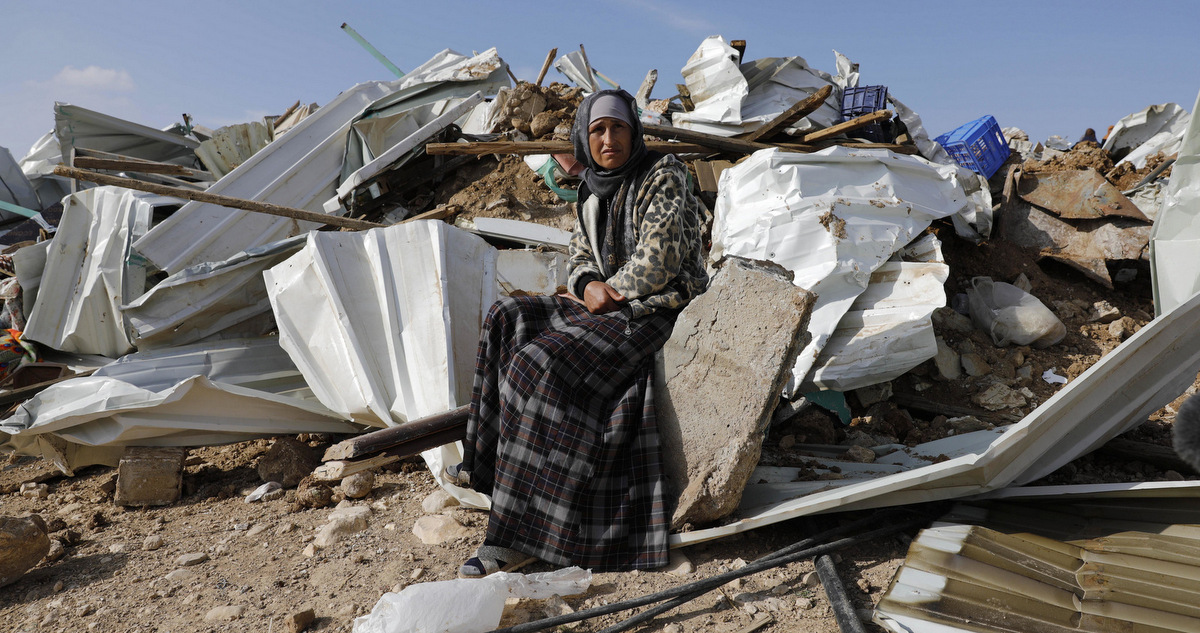
A Bedouin woman sits on the demolished remnants of a her home in the Bedouin village of Umm al-Hiran in the Southern Naqab, Jan. 18, 2017.
(AP/Tsafrir Abayov)
Following the 1948 war, the Israeli authorities did not recognize the Bedouin’s traditional ownership rights – only a document issued by a foreign power like the Ottoman or the British was acceptable to prove land ownership. As a consequence, nearly all the lands previously held by the Negev Bedouins were nationalized to the Israeli State. This was accomplished through a series of legal procedures.
Thus the Bedouin’s lands became “empty” and open for Jewish settlement and the Bedouin became trespassers on their own lands.
Beginning in 1960’s, the Israeli government attempted a “comprehensive approach” to the Bedouin “problem.” The state established seven government-planned townships, which are mentioned by name in the report submitted to the United Nations. Plots of land in these urban townships were offered to Bedouin who were willing to relinquish claims to their own land. The Bedouin who were internally displaced following the establishment of the State of Israel were unable to return to their ancestral lands and so they make up 85 percent of the population of the new townships
Approximately 105,000 Bedouin live in these urban townships, created by the State of Israel in order to gradually eradicate — death by malnourished death, illness by untreated illness — the Bedouin population. Due to concerted efforts to decimate the Bedouin pastoral economy and expropriate Bedouin lands, the Bedouin are not permitted to cultivate their lands and poverty; unemployment and crime are rampant, even as segregated Jewish-only Israeli communities thrive all around them.
Not what democracy looks like

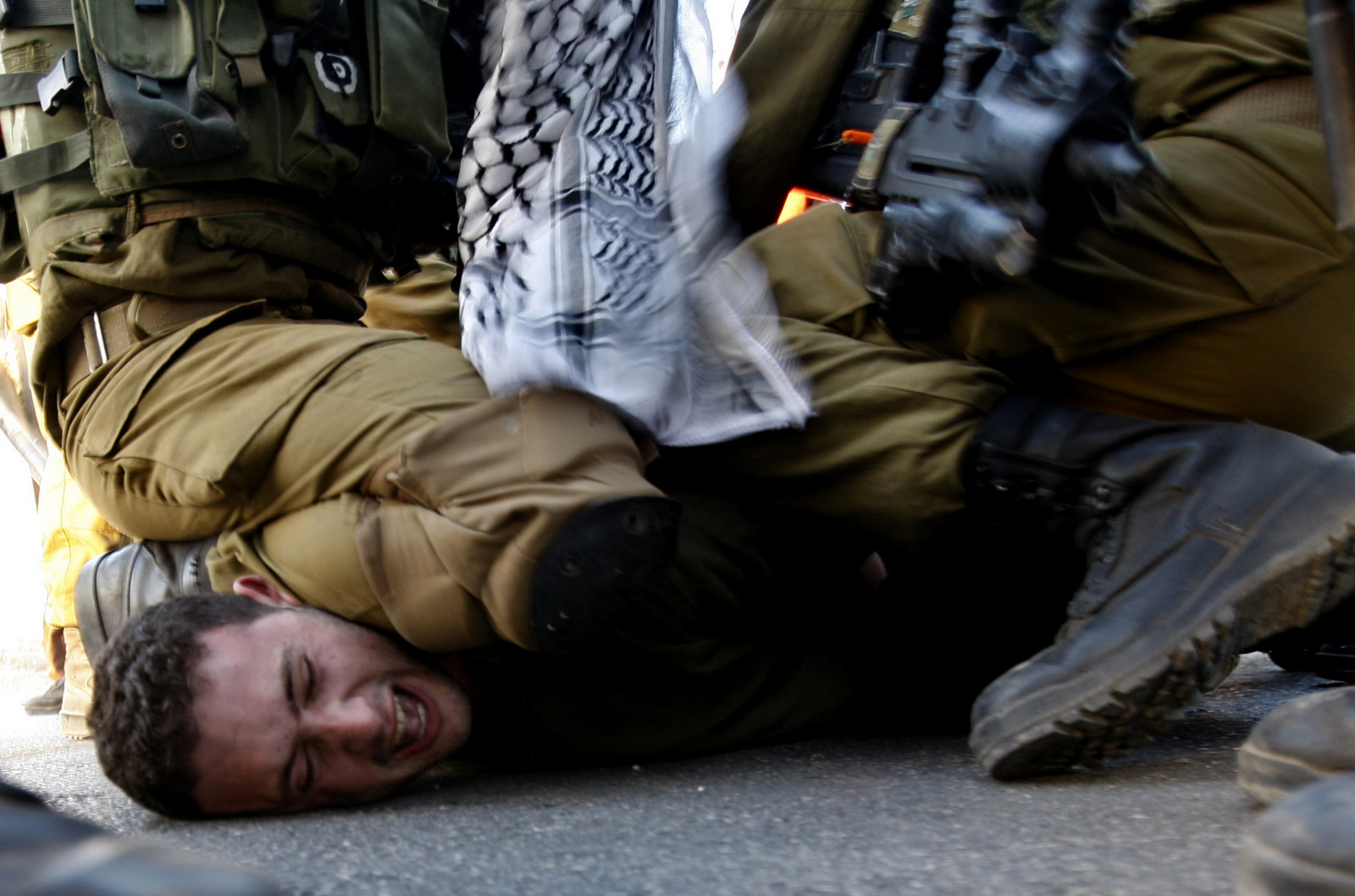
A Palestinians activist is detained by Israeli soldiers during a protest against the Prawer Plan to resettle Israel’s Palestinian Bedouin minority near the Israeli settlement of Bet El, north of Ramallah, Nov. 30, 2013. (AP/Majdi Mohammed)
Regardless of what Israel may claim about being a democracy, the Zionist attitudes and policies culminate in apartheid, racism and colonialism. The Palestinian Bedouin community in the Naqab has been subjected to forced exile, displacement, denial of rights, denial of services, and serious deprivation of water. Because the Naqab is a largely fertile desert where agriculture and animal husbandry were practiced by the indigenous Bedouin community for centuries, from 1948 to the present time the State of Israel, in settler-colonial fashion, has been engaged in taking the land and the resources while getting rid of the indigenous communities on it.
The reality in the Naqab puts to rest the claim that the boycott of Israeli goods should only apply to West Bank settlements. Clearly the theft of land from the Palestinian Bedouin and the building of Jewish-only settlements on it cannot be considered legal and should not be legitimized in any way.
Furthermore, we must not allow for the legitimizing of the occupation by accepting and using the names given to localities in Palestine by the Zionist state.
Therefore the main city is Bir-as-Saba’, the region is the Naqab, and the country is Palestine.
Top Photo | Bedouin women sit outside a demolished home by Israeli forces in the southern village of Umm al-Hiran, Jan. 18, 2017. (AP/Tsafrir Abayov)
Miko Peled is an author and human rights activist born in Jerusalem. He is the author of “The General’s Son. Journey of an Israeli in Palestine,” and “Injustice, the Story of the Holy Land Foundation Five.”
<!–
–>
Source Article from https://www.mintpressnews.com/in-bir-as-saba-in-palestine-israel-destroys-and-renames-things/238401/
Related posts:
Views: 0
 RSS Feed
RSS Feed















 March 3rd, 2018
March 3rd, 2018  Awake Goy
Awake Goy 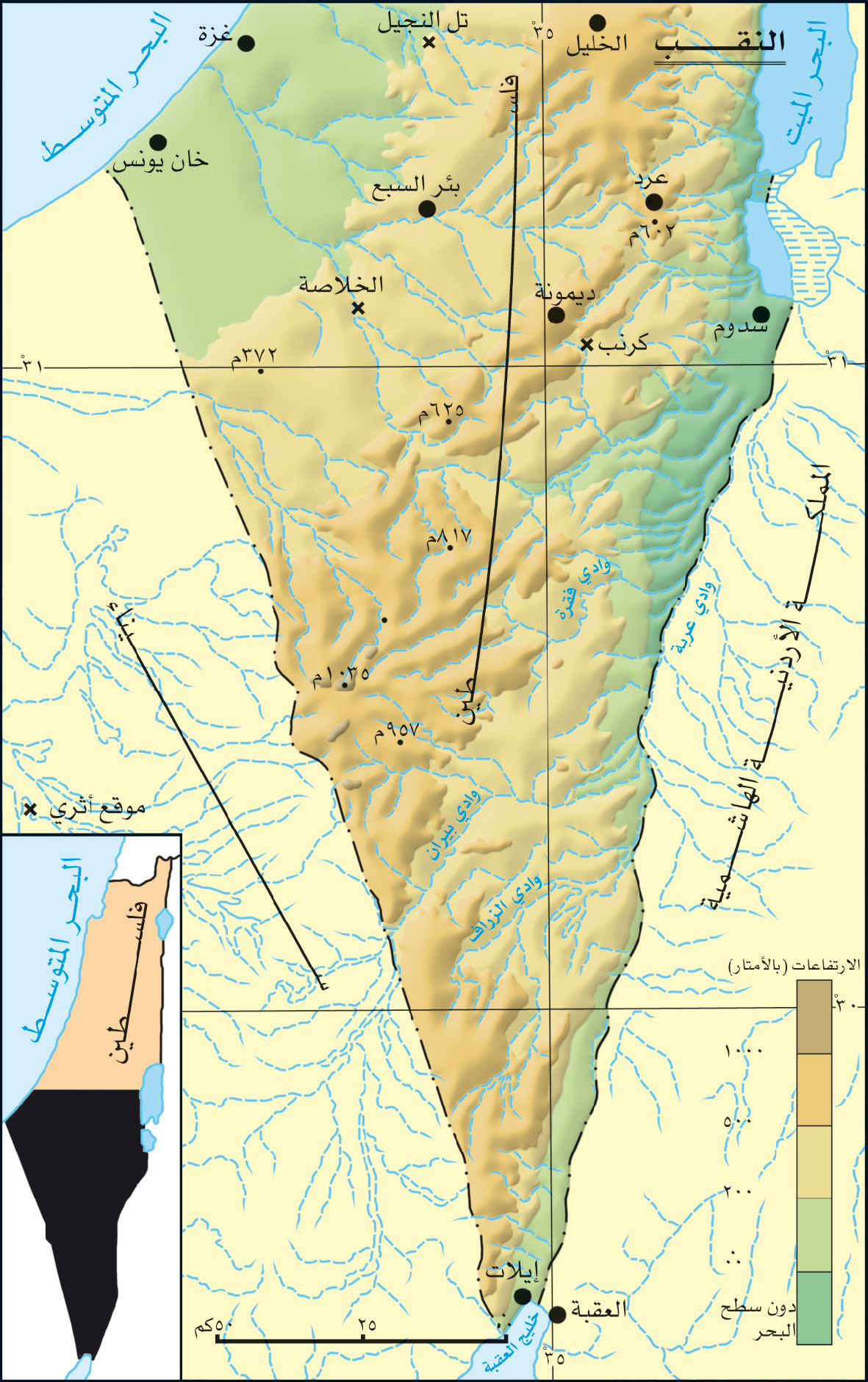
 Posted in
Posted in  Tags:
Tags: 
















